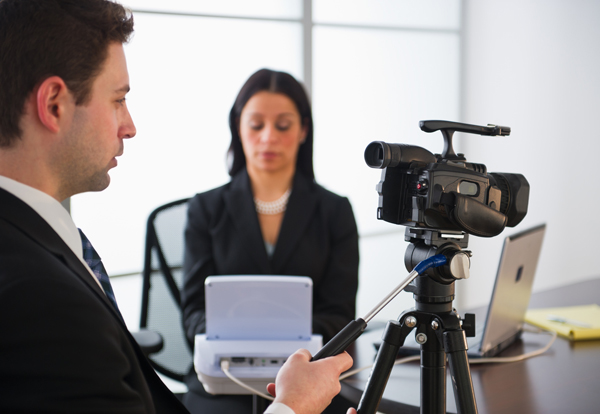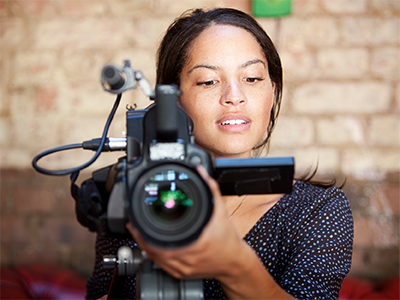Why Lawful Videography Is Critical for Accurate Court Recordings
The function of legal videography in court room setups can not be overstated, as it serves as an essential device for protecting the stability of court documents. By capturing both verbal and non-verbal interaction, it boosts the clearness of witness testaments and mirrors the subtleties of court room interactions. This detailed documentation not just help in minimizing potential misunderstandings but additionally sustains appellate evaluations, consequently enhancing the judicial process. The effects of integrating legal videography right into basic courtroom practices elevate essential questions concerning its broader impact on the lawful system. What might these implications require?
Value of Visual Evidence
In the world of lawful process, the relevance of aesthetic evidence can not be overemphasized. Aesthetic proof serves as an effective tool in developing realities, proving statements, and improving the general clarity of an instance. This sort of evidence, that includes pictures, video clips, and diagrams, can provide a substantial context that verbal descriptions frequently lack, thereby using juries and courts a more clear understanding of the situations surrounding a case.
Furthermore, visual proof help in the retention of information. Human cognition is naturally visual, and individuals are more probable to keep in mind and understand information presented in an aesthetic layout. In the court room, this can be essential, as compelling visual evidence can guide point of views and reinforce the story offered by legal reps.
Additionally, making use of visual proof can lessen misunderstandings and obscurities that usually emerge from verbal exchanges. By giving a direct depiction of occasions, visual proof helps to eliminate subjective interpretations and fosters a much more unbiased evaluation of the truths. Consequently, the combination of aesthetic proof right into lawful procedures not only strengthens the integrity of the judicial process yet also enhances the likelihood of attaining a simply result.
Capturing Non-Verbal Signs
Using sophisticated videography techniques can dramatically improve the capture of non-verbal signs during lawful process. Non-verbal communication, including face expressions, body movement, and eye contact, plays a critical function in conveying feelings and intents that might not be explicitly specified in verbal testimony. legal videography. Lawful videography employs high-definition electronic cameras and tactical angles to ensure that these subtle cues are taped with clarity and accuracy
The ability to examine non-verbal behavior can give useful context to statements made throughout court sessions. For circumstances, a witness's unwillingness or confidence can be analyzed through their posture or motions, potentially influencing the court's perception of trustworthiness. Additionally, the usage of close-up shots can assist concentrate on an audio speaker's expressions, permitting for a much more nuanced understanding of the testament.
Moreover, integrating multiple video camera angles can create a thorough view of communications, highlighting dynamics between events entailed. This diverse strategy not just boosts the precision of the court record but likewise help in protecting the integrity of the judicial process - legal videography. Eventually, catching non-verbal signs with legal videography fosters a richer, extra full representation of court process

Enhancing Testimony Dependability
The reliability of testament can be significantly reinforced with using top quality legal videography. Video clip recordings function as an unbiased medium that catches not only the talked words of witnesses but likewise the nuances of their shipment, including tone, pacing, and emotional expressiveness. This multifaceted documentation supplies a more clear understanding of the witness's reputation and intentions, which can be crucial in investigate this site lawful process.
Additionally, legal videography lessens the capacity for misconceptions that might develop from composed records alone. When jurors can observe a witness's temperament and body movement combined with their statement, they are much better equipped to analyze click for more info the authenticity and dependability of the proof provided. This visual context can reinforce the testimonial story, making it a lot more engaging and reliable.
Furthermore, the visibility of a video recording can discourage potential disparities in statement. Witnesses may be much more cautious in their declarations when they understand they are being taped, bring about more accurate and honest accounts. On the whole, high-grade legal videography enhances the integrity of testimony, making sure that the court has access to a full and genuine representation of the truths as conveyed by the witnesses.
Supporting Appeals and Reviews
Legal videography plays an useful content essential role in supporting appeals and reviews by providing a thorough visual document of court procedures. This aesthetic paperwork captures not just the spoken words of witnesses and attorneys however likewise the nuances of body movement, intonation, and court characteristics. Such aspects can be critical in understanding the context of statements and arguments provided.
In the appellate process, where the emphasis gets on errors of law and procedural justness, a video clip record can function as an important tool for appellate courts. It enables courts to review the initial test context, making sure that choices are based on a full understanding of the procedures. The capacity to aesthetically analyze the demeanor of witnesses or the interactions between celebrations can reveal understandings that composed records may ignore.

Additionally, lawful videography can assist in making clear uncertainties in testaments or procedural judgments, thus strengthening the basis for a charm. By providing a trustworthy, objective account of what taken place in court, legal videography not only supports the stability of the lawful process but likewise empowers all events entailed to make informed decisions concerning their cases.
Streamlining Courtroom Procedures
Enhancing courtroom effectiveness, lawful videography enhances processes by giving instant accessibility to aesthetic documents of process. This technology enables courts, lawyers, and courts to take another look at essential statement and evidence, making certain that all events have a clear understanding of the instance. By catching the nuances of verbal and non-verbal interaction, videography improves the record, making it simpler to understand the context and weight of statements.

Furthermore, video recordings can promote remote involvement in hearings, enabling higher versatility in scheduling and involvement, which is especially beneficial in complicated cases involving multiple stakeholders.
Final Thought
In final thought, lawful videography plays an essential function in making sure precise court recordings by offering necessary visual evidence that catches both verbal and non-verbal interaction. This practice improves the reliability of testaments, sustains appellate evaluations, and enhances court processes. By fostering an extensive understanding of court dynamics, legal videography eventually contributes to extra fair judicial outcomes, strengthening the stability of the legal system and promoting notified decision-making.
Comments on “Legal Videography: An Innovative Approach to Preserving Legal Testimonies”